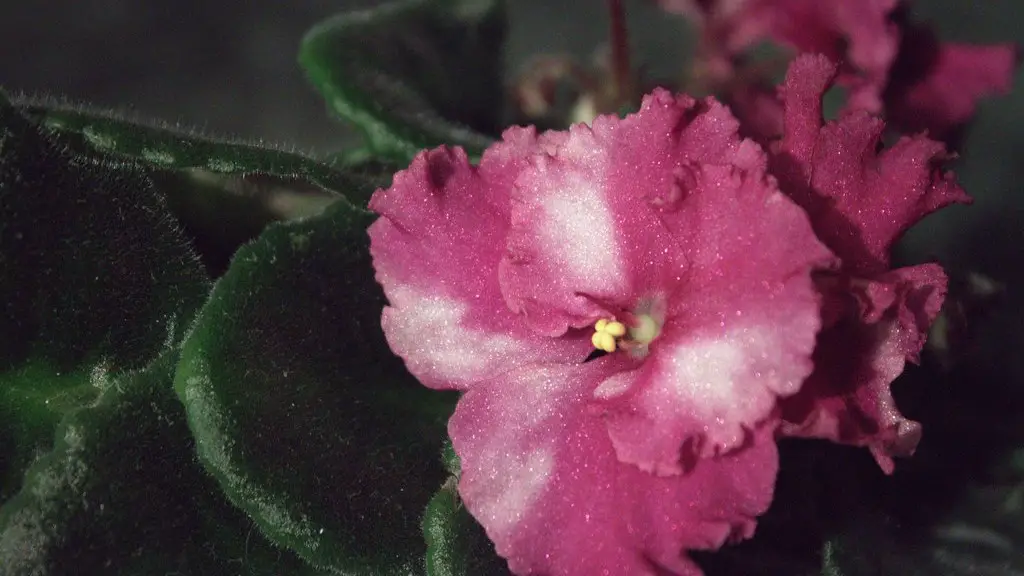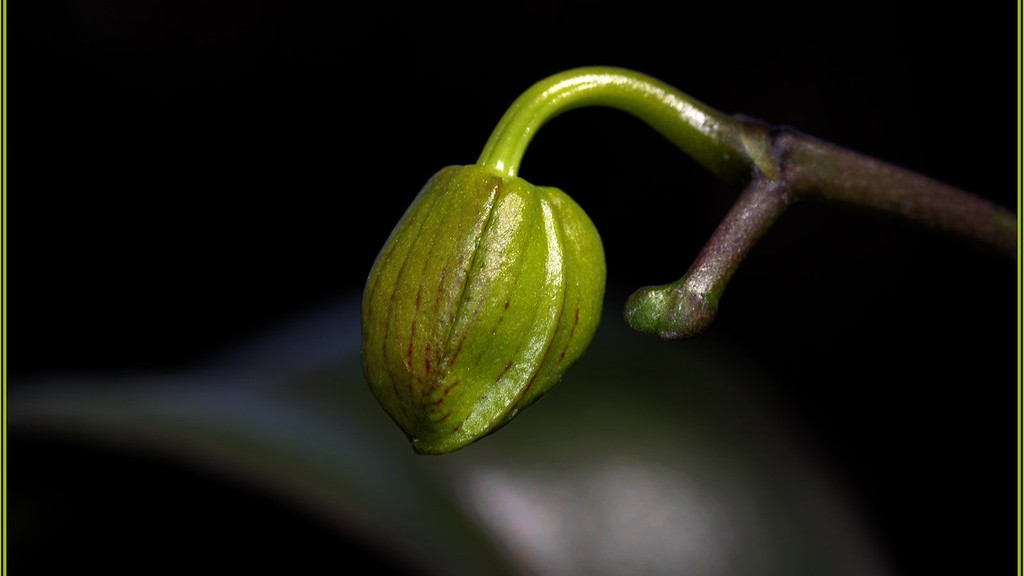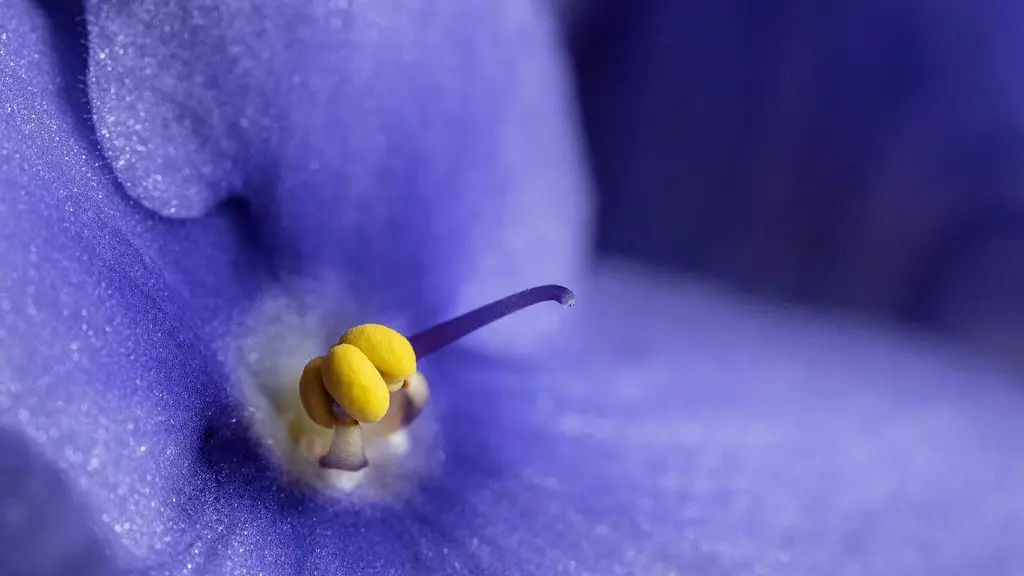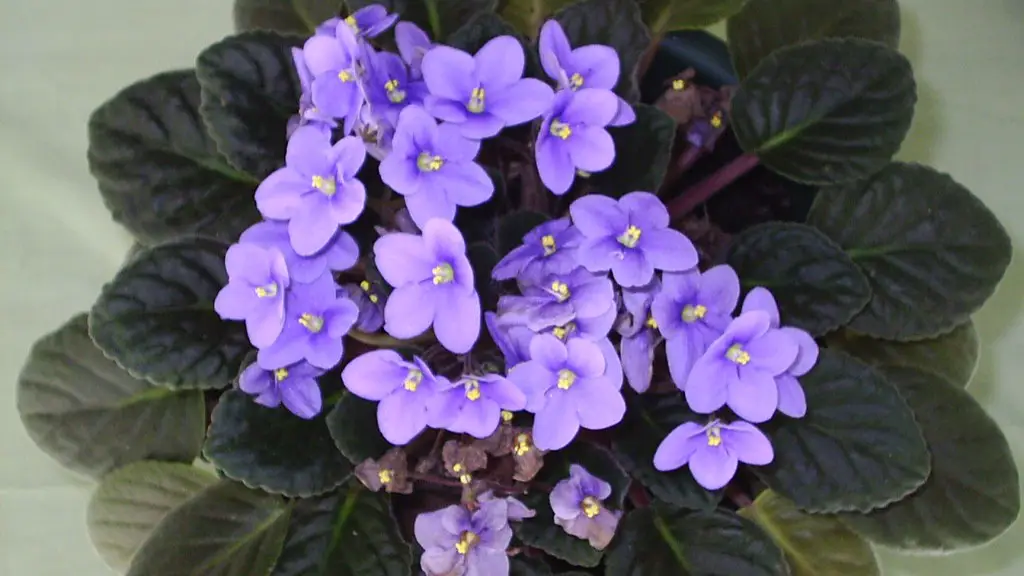If you’re an african violet fan, you know the sinking feeling you get when you notice one of your plants isn’t looking so great. Maybe the leaves are wilting, the edges are browning, or there are fewer blooms than usual. Or, your plant may just flat-out die. While it’s normal for individual leaves or blooms to wither and die, it’s not normal for your plant to steadily decline. So, what’s going on? Here are a few potential explanations for why your african violets might be dying.
The most common reasons for African violets dying are inadequate light, improper watering, and poor drainage.
What does an overwatered African violet look like?
If you notice that your African Violet plant’s leaves are looking limp or mushy, it is likely that the plant has been over-watered. When this happens, the soil retains too much water which can cause the leaves and stems to turn soft. If you think your plant may be over-watered, check the soil to see if it is moist or dry. If the soil is moist, reduce the amount of water you are giving the plant and let the soil dry out more between waterings.
Wicking systems are an easy and effective way to make sure your African violets are never over watered. Simply fill a container with water and place it next to your plants. Then, place a wick in the water and allow it to soak up the water. The wick will then transport the water to the roots of your plants, keeping them hydrated.
How do you rejuvenate African violets
If you need to repot your violet, be sure to cut off the bottom of the root ball, cutting as much off the root ball as the neck is long. Cover the scraped neck with potting medium to the bottom set of leaves. That scraped neck will grow new roots. Try to repot your violet more often to avoid having to cut a large amount of the root ball away.
If your African violet leaves and petioles are coming into contact with salts, they may be damaged and could eventually drop off. To avoid this problem, most African violet growers raise their plants in plastic or ceramic pots with drainage holes.
Should African violets be watered from the top or bottom?
African violets can be watered from the top or bottom, although lukewarm or warm water is preferable to cold water. If watering from the top, be careful not to get water on the leaves when the plant is in the sun, as this can cause leaf spots.
It is important to water African violets correctly to avoid crown rot. Do not mist the foliage, as this can cause permanent leaf spotting. Use room-temperature water and water the plants at the base, being careful not to saturate the crown.
Can I revive my African violet?
If your African violet is droopy, it may be due to a lack of water. Give it a good drink and the leaves should spring back to life within 24 hours. If the plant is well-watered but still droopy, check to see if it is by an air vent.
If you want your plants to have vibrant colors and beautiful blooms, it’s best to grow them in bright, indirect light. A plant stand three feet away from a west- or south-facing window is an ideal location. Plants will still grow when situated right beside north- or east-facing windows, but leaves will be thin and spindly, and plants less likely to bloom.
Do African violets need direct sunlight
African violets need indirect sunlight and a north- or east- facing window for best results. Keep plants away from cold glass and rotate the pot once a week so all leaves receive light. Extend daylight by placing African violets under a grow light during winter months.
Epsom salts are a great way to provide your plants with essential magnesium and sulfur. These two minerals are needed for beautiful blooms and healthy foliage. To use, simply mix 1 1/2 teaspoons of Epsom salts in a quart of tepid water and swirl to dissolve. Water your African violets with this solution once a month.
How often should you feed African violets?
Your African Violet needs fertilizer to stay healthy throughout the year. During the spring and summer, you should fertilize your African Violets once every two weeks. In the fall and winter, you shouldn’t fertilize the plant at all to prevent over-fertilizing.
African violets are a beautiful and popular type of flower, but they can be finicky when it comes to blooming. If you’re having trouble getting your African violet to bloom again, try these eight tips:
1. Let There Be Light: African violets need bright, indirect light to bloom well. If your plant is not getting enough light, move it to a brighter spot.
2. Turn Up the Humidity: African violets also prefer high humidity, so try misting your plant daily or setting it on a pebble tray.
3. Replenish Essential Nutrients: Fertilize your African violet every two weeks with a high-quality fertilizer made specifically for African violets.
4. Keep it Pleasant: African violets like room temperatures around 70 degrees Fahrenheit. Avoid drafts and sudden temperature changes.
5. Choose the Right Soil: Use a light, well-draining soil mix made for African violets.
6. Protect From Pests & Disease: Inspect your plant regularly for pests and disease. Treat immediately if found.
7. Constrict the Roots: Once your African violet is blooming well, you can encourage more
What kills African violets
To get rid of wild violets without harming your grass, use a broadleaf killer that contains 2,4-D or Dicamba. Drive (quinclorac) is another great wild violet herbicide that will selectively kill the violets without damaging the grass.
There are a few things to look for when distinguishing symptoms in an African Violet. One is if the plant topples over at the base. Another is if the top part of the plant separates from the root system entirely, though the crown is still intact. Finally, if the roots are decayed or have yellow or yellowish-brown stripes on them, this is another symptom to look for.
Do African violets need bigger pots?
As a general rule, African violets do best when they are slightly pot-bound. This means that you should choose a pot that is on the smaller side, as opposed to one that is too large. A good rule of thumb is to choose a pot that is 3-4 inches in diameter for a standard African violet plant.
If you are unsure about the quality of your tap water, it is best to err on the side of caution and use filtered or distilled water for your African violets. Chlorine levels can fluctuate depending on the season and in some areas, tap water may have high amounts of chlorine, chloramines, or dissolved solids which can all adversely affect your plants.
Final Words
There could be a few reasons as to why your African violets are dying. One possibility is that they are not receiving enough sunlight. African violets need at least 12 hours of bright, indirect sunlight every day in order to thrive. Another possibility is that you are overwatering them. African violets like to be kept slightly on the dry side, so be sure to only water them when the soil is dry to the touch. Lastly, African violets are susceptible to a number of pests and diseases, such as aphids, mealybugs, and fungal infections. If you suspect that your plants are infested or diseased, be sure to contact your local Extension office for more information on how to treat the problem.
The most common reason for African violets to die is from over-watering. African violets need to be watered only when the soil is dry to the touch, and they like to be kept in a humid environment. If the leaves of the plant are wilted or yellow, this is a sign that the plant is not getting enough water. Another common reason for African violets to die is from too much direct sunlight. The leaves of the plant will start to turn yellow and then brown if they are getting too much sun. African violets should be kept in a spot that gets indirect sunlight for best results.





